Afghanistan – A catastrophic Afghanistan Earthquake measuring magnitude 6 devastated the eastern provinces of Kunar and Nangarhar on Monday, killing at least 622 people and injuring over 1,500 others. The midnight tremor struck at a depth of 10 kilometers, causing widespread destruction across remote mountainous communities.
The Afghanistan Earthquake represents one of the country’s worst seismic disasters in recent years, surpassing previous tragic events that have plagued this earthquake-prone region. Taliban-run interior ministry officials confirmed the devastating toll as rescue operations continue across affected areas.
This latest Afghanistan Earthquake occurred in a region with a documented history of seismic activity and natural disasters, highlighting the ongoing vulnerability of communities living in Afghanistan’s mountainous terrain.
Massive Rescue Operations and Emergency Response
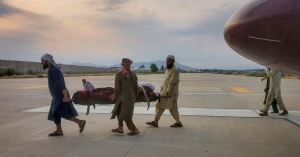
Following the Afghanistan Earthquake, comprehensive rescue operations mobilized across affected regions with military teams deploying throughout Kunar and Nangarhar provinces. Defense ministry officials confirmed 40 flights have transported 420 wounded and deceased individuals from disaster zones.
Interior ministry spokesperson Abdul Maten Qanee emphasized that all available teams have been mobilized to accelerate assistance following the Afghanistan Earthquake. Rescue efforts encompass security, food distribution, and healthcare provision to ensure comprehensive support for affected communities.
Helicopters continue ferrying injured victims to medical facilities as rescuers work tirelessly to reach remote hamlets scattered across the mountainous landscape. The Afghanistan Earthquake response demonstrates coordinated efforts between military units and civilian emergency services.
Geographic Impact and Village Destruction
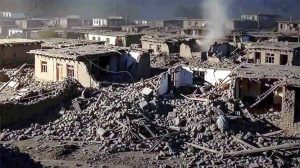
The Afghanistan Earthquake completely razed three villages in Kunar province while causing substantial damage across numerous other settlements. This widespread destruction reflects the tremor’s intensity and the vulnerability of traditional mud and stone construction methods.
Kunar province bore the heaviest casualties from the Afghanistan Earthquake, recording 610 deaths, while Nangarhar province reported 12 fatalities. The geographic distribution of casualties highlights varying impact levels across different terrain and population densities.
Remote location challenges have complicated rescue efforts following the Afghanistan Earthquake, as emergency teams navigate difficult mountain terrain to reach isolated communities. The affected area borders Pakistan’s Khyber Pakhtunkhwa region, emphasizing cross-border geographical connections.
Humanitarian Crisis and Civilian Casualties
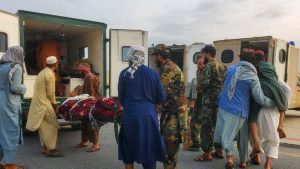

The Afghanistan Earthquake has exacerbated existing humanitarian challenges facing the South Asian nation already struggling with reduced international aid and refugee influxes. This natural disaster compounds existing resource constraints affecting emergency response capabilities.
Local hospitals reported at least 43 Palestinian deaths since Saturday, with Shifa Hospital documenting 29 casualties. However, the Afghanistan Earthquake casualties far exceed these numbers, creating unprecedented medical emergency situations requiring immediate intervention.
Also Read: Israel Kills Hamas Spokesperson, Abu Obeida in Gaza
Medical facilities face overwhelming patient influxes as the Afghanistan Earthquake aftermath continues generating critical care requirements. Emergency medical services are coordinating helicopter evacuations to ensure adequate treatment for severely injured survivors.
International Response and Support Limitations
Foreign office spokesperson confirmed that no international governments have yet offered support for rescue or relief operations following the Afghanistan Earthquake. This lack of immediate international assistance highlights ongoing diplomatic challenges affecting Afghanistan’s emergency response capabilities.
The absence of foreign support for the Afghanistan Earthquake response reflects broader international relations complexities since Taliban governance began. Limited international engagement complicates disaster relief coordination during critical emergency periods.
Afghanistan’s isolation from traditional international aid mechanisms creates additional challenges for managing large-scale disaster responses like the current Afghanistan Earthquake crisis requiring substantial resource mobilization.
Seismic Vulnerability and Geographic Factors
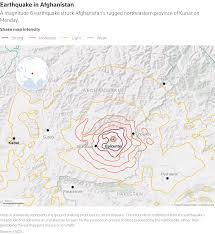

Afghanistan’s location within the Hindu Kush mountain range places the country at the intersection of Indian and Eurasian tectonic plates, creating inherent seismic vulnerability. The Afghanistan Earthquake exemplifies ongoing geological risks affecting mountain communities throughout the region.
Historical earthquake data shows Afghanistan experiences frequent deadly tremors, with the previous major disaster occurring in June 2022 when magnitude 6.1 tremors killed at least 1,000 people. The current Afghanistan Earthquake represents the deadliest seismic event since that tragedy.
Last year’s western Afghanistan earthquakes killed over 1,000 people, demonstrating consistent seismic threats facing one of the world’s poorest countries. These recurring disasters underscore Afghanistan’s extreme vulnerability to natural catastrophes.
Emergency Medical Response and Treatment Challenges
Healthcare authorities in Kabul coordinated rapid response efforts to address the Afghanistan Earthquake medical emergency. Rescue teams race against time to reach remote hamlets where traditional construction methods offer minimal earthquake resistance.
Military rescue operations include medical evacuation capabilities, with helicopters providing critical transportation for severely injured survivors. These emergency medical responses represent coordinated efforts to maximize survival rates following the devastating Afghanistan Earthquake.
Emergency medical facilities struggle with resource limitations while treating unprecedented casualty numbers from the Afghanistan Earthquake. Medical professionals work under challenging conditions to provide adequate care for both immediate trauma cases and ongoing health complications.
Infrastructure Damage and Reconstruction Challenges
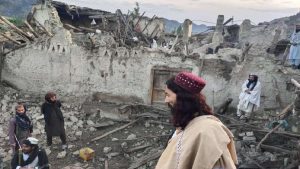

The Earthquake destroyed numerous homes constructed with traditional mud and stone materials common throughout rural Afghan communities. These building methods, while culturally appropriate, offer limited resistance to seismic forces during major earthquakes.
Reconstruction efforts following the Earthquake will require substantial resources and technical expertise currently limited within Afghanistan’s constrained economic environment. The scale of destruction necessitates comprehensive rebuilding programs across multiple affected villages.
Conclusion: Ongoing Crisis Management
The devastating Earthquake highlights the urgent need for enhanced disaster preparedness and international humanitarian cooperation. With 622 confirmed deaths and over 1,500 injuries, this natural disaster represents a significant challenge for Taliban-run government emergency response capabilities.
As rescue operations continue and casualty numbers potentially rise, the Afghanistan Earthquake underscores Afghanistan’s vulnerability to natural disasters amid existing humanitarian crises. Effective long-term recovery will require coordinated efforts addressing both immediate emergency needs and underlying structural vulnerabilities that amplify disaster impacts throughout the region.

